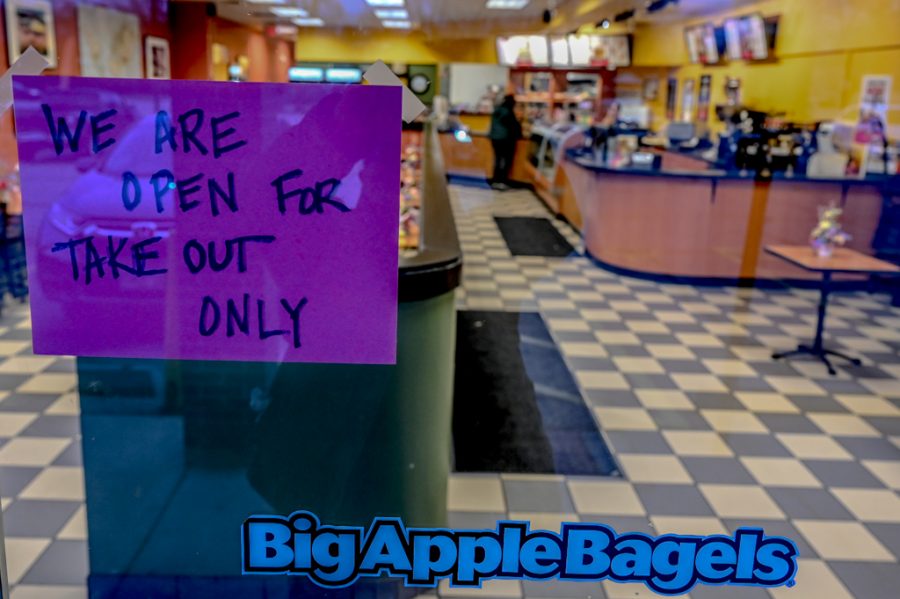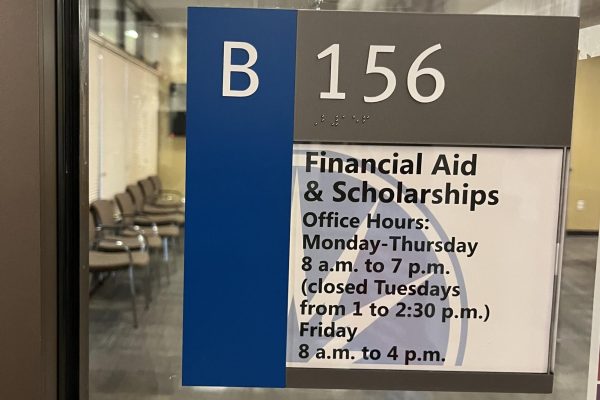Should States Reopen So Soon?
Local Big Apple Bagels complies with the Illinois Governors mandate to close all restaurants except for take out.
May 13, 2020
Despite the ongoing threat of the Coronavirus pandemic in the US, state governments across the country are reopening their economies. Because each state has different stay-at-home regulations in place, some states have been reopened for weeks, and some states, like Arkansas, never had them in the first place. Many states that have not opened in the past weeks are set to reopen by May 15. But what does that mean for US citizens?
While many states have their own social distancing requirements, the White House has released its own criteria guidelines for when states should reopen.
The Center for Disease Control’s guidelines require that there is a “downward trajectory of COVID-like syndromic cases reported within a 14-day period,” as well as a drop in documented cases and COVID-positive test results. Hospitals are also required to treat all patients and test at-risk workers, specifically in healthcare.
Yet not all the states that are beginning to reopen have followed these measures, and it could be detrimental, especially since many states don’t have the capacity for widespread testing yet.
In many states that are reopening, like Georgia, Coronavirus cases are actually still rising, according to NPR.
Regardless of standards or guidelines, retail enterprises, shopping centers and spas have reopened in some states. Right now, both staff and testing is limited, which poses an obvious threat to businesses, since staff could be wary about coming into work without proper safety measures or testing.
A team of disease modelers at the University of Washington’s Institute for Health Metrics and Evaluation has modeled a new standard for states looking to reopen soon: if states can handle one new Coronavirus case per every million people, then it should be able to keep subsequent outbreaks from occurring.
Because so many states are unable to meet the proper guidelines, epidemiologists and other health professionals are concerned about moving too quickly.
“With so many places opening up before we see indicators of meaningful, sustained transmission declines, there is substantial risk of resurgence,” said Kimberly Powers, an infectious disease epidemiologist at the University of North Carolina at Chapel Hill in an interview with the New York Times.
If state governments decide to reopen their economies now, resurgence is especially possible since many states are unable to meet the threshold of handling one COVID-19 case per one million people, as well as not following the CDC guidelines.
According to NPR, in order for most states to meet the IHME standard for reopening, state governments should wait until at least June.
While some states can meet that standard, without widespread testing, it is hard to tell when the coast will be clear.
“The lesson for the ongoing Coronavirus pandemic in 2020 is that, to curtail overall deaths,” wrote the chief author of an analysis of the Spanish Influenza epidemic, Robert J. Barro, [that safety measures] “have to be maintained for substantially longer than a few weeks.”








